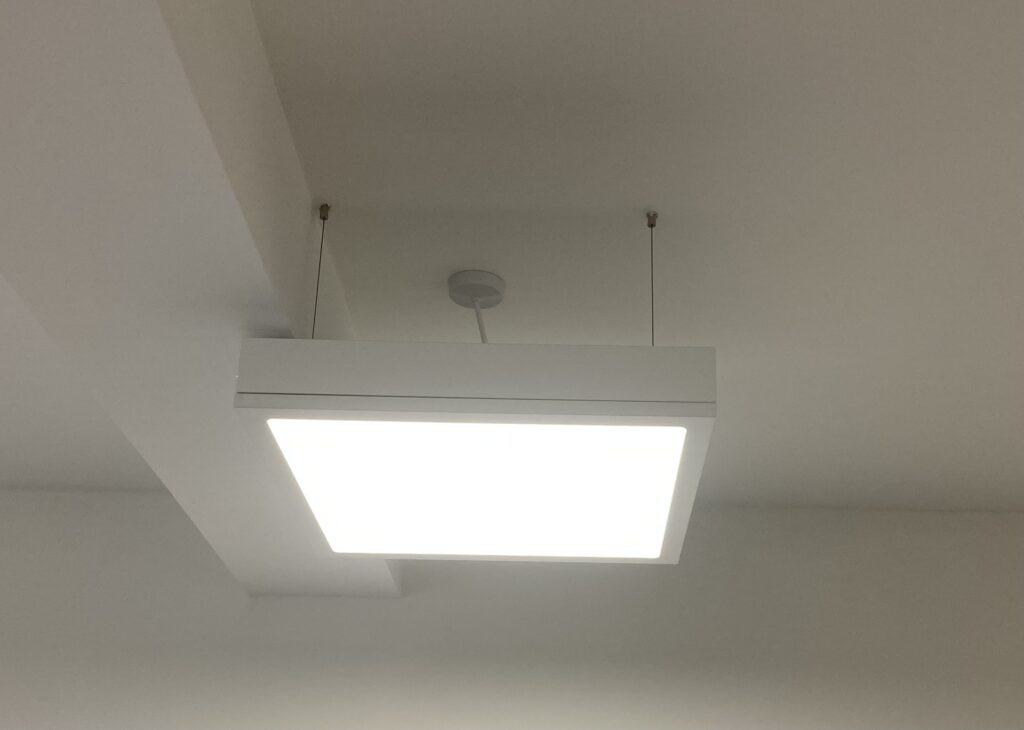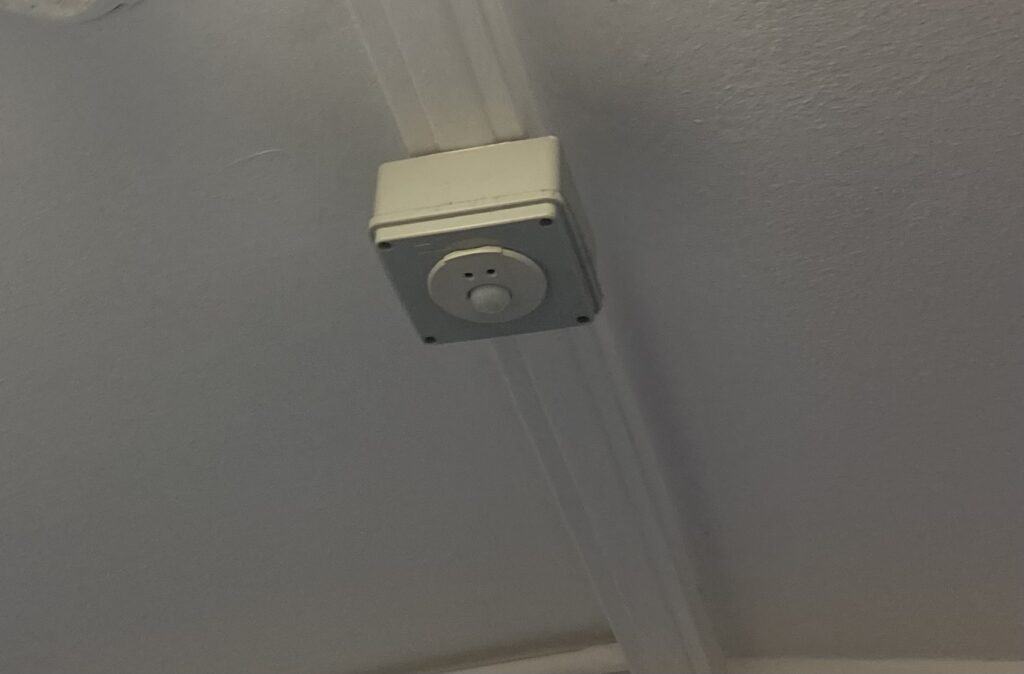I’ve installed hundreds of microwave motion sensors in my time as an electrician, and this post is as much for my benefit as for readers. To satisfy my own curiosity, I wanted to dive a little deeper into the technology behind microwave sensors and discover how microwave sensors work.
I’m sure there are more in-depth articles using much more scientific words than I could ever manage, but I like to think this is going to be more of a layman’s guide. If you are looking to automatically control lighting, you may have come across the technology but are wondering, what actually is a microwave sensor in simple terms?

Microwave sensors work by emitting high-frequency radio waves that bounce off objects and return to the sensor. By analysing the reflected waves the sensor can determine the location, speed, and direction of the object. A perfect solution if we require lights to activate upon presence detection.
Microwave sensors are used in a variety of applications, such as in the automotive industry, security systems, and even in cooking appliances. In my line of work, I often install microwave sensors as a means to control lighting. The sensor detects the presence of a person and then turns the light on. Super convenient and has a whole host of environmental benefits to boot!
How do Microwave Sensors Work?
The technology that makes microwave sensors work is based on the principles of electromagnetic radiation. The sensor emits a wave that travels through the air and bounces off objects in its path. The wave then returns to the sensor, where it is detected and analyzed. The analysing of the wave is able to detect if a person or object is in the detection zone, causing the light to trigger.
Microwave sensors are complicated electronics. Whilst this makes them efficient at detecting motion, they can be a bit of a pain on-site to set up correctly. By adjusting the settings on the sensor we adjust the frequency of the wave and therefore the sensitivity of the sensor. Higher frequencies provide greater accuracy and detail but can cause false triggers.
What Components Make Up a Microwave Sensor?
I don’t often get down to component level in my career but I was interested to do some research and discover that microwave sensors consist of several components that work together to detect and measure physical properties. The main components of a microwave sensor include a transmitter, a receiver, and an antenna.
| Transmitter | The transmitter emits a high-frequency microwave signal, which is reflected by the object or surface it encounters. |
| Reciever | The receiver, receives the reflected signal which can then measure the time delay between the transmitted and received signals. |
| Antenna | The antenna is used to direct the microwave signal and to receive the reflected signal |
In addition to these main components, microwave sensors may also include other components such as amplifiers, filters, and signal processing circuits. These components help to amplify and filter the received signal, and to convert it into a usable form for further processing and analysis.
The electronic components in microwave sensors make them more suited to lighting tasks than others. They work great in corridors when we want early detection of people, but they are not so good for exterior tasks when a more robust (and less sensitive) PIR is more suitable.

The Science Behind Microwave Sensors
Once the microwave sensor receives the reflected waves it uses something called the Doppler shift to determine the presence, direction, and speed of the object. The Doppler effect sounds like something from the Big Bag Theory;
“The Doppler effect is the change in frequency or wavelength of a wave in relation to an observer who is moving relative to the source of the wave.”
Wikipedia
Apparently, this principle is similar to how radar works, which makes it seem less confusing to me at least. If the wave transmitted is disturbed by an object, the received wave is different and it knows the wave has been interrupted by an object.
Microwave Sensor Frequencies
Microwave sensors operate at frequencies ranging from 300 MHz to 300 GHz. The most common frequency used in microwave sensors is 10.525 GHz, which is the frequency used in most automatic door openers. Think of the magic behind that next time you walk up to a door and it just automatically opens!
Other frequencies commonly used in microwave sensors include 24 GHz and 77 GHz. The choice of frequency depends on the application and the range of detection required. Lower frequencies are better for longer-range detection, while higher frequencies are better for short-range detection.
Where are Microwave Sensors Used?
Before researching this article I was a bit short sited as to how many industries use microwave sensors. When I talk about them on this site, I am always referring to their use in motion-controlled lighting applications. It turns out that this is just a small part of the microwave sensors’ use cases.
The table below shows some of the areas microwave sensors are used in besides lighting control.
| Security Systems | Used to detect intruders and unauthorised vehicles, typically signalling an alarm |
| Traffic monitoring | Microwave sensors are used to detect the speed and direction of vehicles and to control traffic signals. |
| Industrial automation | In industrial automation, microwave sensors are used to detect the presence of objects and to control machinery. For example, once the machine detects the bottle it knows its time to fill it. |
| Industrial cooking applications | In cooking appliances, microwave sensors are used to detect the moisture content of food and to adjust cooking times accordingly. |
I’m sure there are loads more use cases, and I’ll be keeping an eye out the next time some clever piece of machinery performs an automatic function for me.
Advantages and Limitations of Microwave Sensors
I for one am a big fan of microwave sensors, but we can see from their list of components and the technology behind how they work that the real-world drawback to their installation is their lack of robustness (in my opinion at least)
I wrote an article comparing microwave sensors against passive infrared (PIR) sensors in which I go over the advantages and limitations of each so if you are interested you can check that article out here. I would definitely advise having a read before purchasing a motion sensor as the correct sensors for the correct location can save a lot of hassle when it comes time to set it up.

